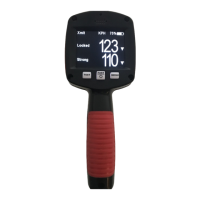11
How Radar Works
Determining a vehicle’s speed begins with the radar transmitting a beam of microwave energy (radio waves) at a
target vehicle. When energy from this beam strikes a vehicle, a small amount of the energy is reected back to the
antenna. The frequency of the reected energy shifts by an amount proportional to the speed of the target vehicle.
This is known as the Doppler eect. The radar device then determines the target vehicle speed from the dierence in
frequency between the reected and transmitted signal.
Interference Sources
When properly installed and operated, a Doppler radar is extremely accurate and reliable. However, variations in the
environment can cause situations and circumstances which can cause spurious (erratic and unusually low or high)
speeds to display. Signs that a speed is spurious can include the following characteristics:
• A reading appears when no target vehicle is in the operational range of the antenna.
• A target vehicle entering the operational range overrides the interference signal, causing the display speed to
change suddenly to the correct vehicle’s speed.
• The Doppler tone is corrupted with noise.
• Speeds are irregular and do not provide a valid trac history.
• Erroneous speeds appear to track changes with the engine rpm.
Angular Interference (Cosine Error Eect)
The cosine eect causes the system to display a speed which is lower than the actual vehicle speed. This condition
occurs when the target vehicle’s path is not parallel to the antenna, including conditions such as the vehicle traveling
on a curve or hill.
As the angle between the beam of the antenna and the target vehicle increases, the displayed speed decreases.
Ideally, an angle of zero (0) degrees is preferable, because the displayed speed is the actual target vehicle speed.
However, in all uses of police radar, the radar device is always at a slight angle to the target vehicle to avoid collisions.
Velocity
Vector
Angle
Radar
An angle between the antenna and the target vehicle causes the cosine
eect

